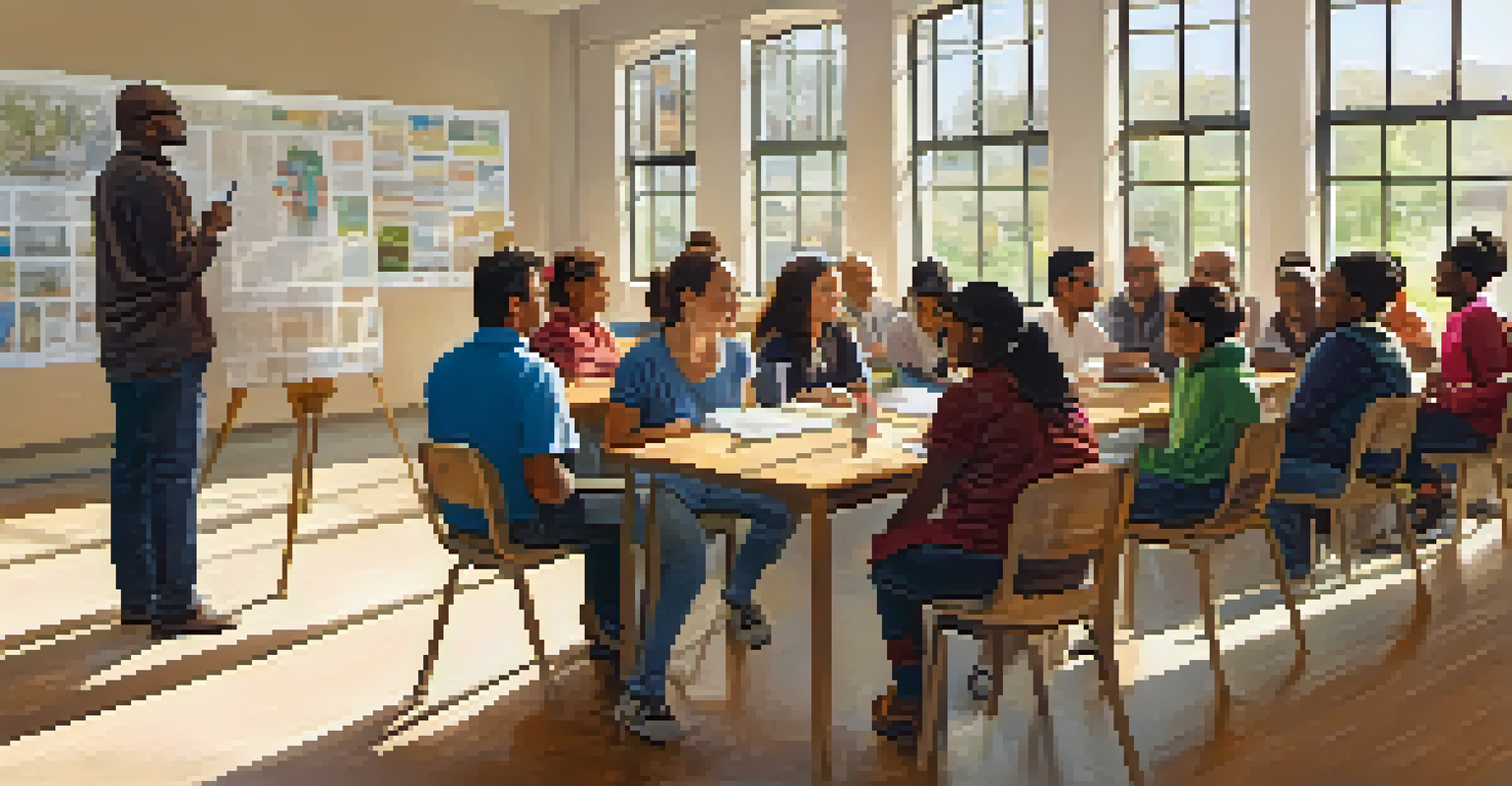Community Resilience: A Key to Public Health Success

Understanding Community Resilience in Public Health
Community resilience refers to the ability of a community to withstand and recover from adversities, be it natural disasters, economic downturns, or public health crises. It encompasses social networks, resources, and skills that help communities bounce back stronger. By fostering connections among residents, communities can enhance their capacity to respond to challenges and improve overall health outcomes.
Resilience is not a single skill, but a variety of skills and coping strategies. It’s the ability to adapt to change and bounce back from adversity.
For instance, during the COVID-19 pandemic, neighborhoods that had strong ties and effective communication channels were better equipped to support one another. From sharing resources to providing emotional support, these communities demonstrated how resilience can lead to healthier populations. This highlights the importance of investing in social capital as a fundamental aspect of public health.
Ultimately, understanding what community resilience entails is the first step toward harnessing its power. When communities recognize their strengths and weaknesses, they can implement strategies that bolster their health and well-being, paving the way for a more robust public health system.
The Role of Social Networks in Resilience
Social networks act as a lifeline during crises, offering support and resources that can significantly impact public health. When people come together, they create a safety net that can help individuals cope with stress and adversity. Whether it's through informal gatherings or organized support groups, these networks foster a sense of belonging and security.

For example, during natural disasters, neighbors often band together to provide assistance, share supplies, and offer emotional support. This collective action not only aids recovery but also strengthens relationships within the community. The more connected individuals feel, the more likely they are to engage in health-promoting behaviors.
Community Resilience Enhances Health
Strong social ties and resources enable communities to withstand and recover from public health challenges.
Thus, nurturing social networks is essential for enhancing resilience. Communities can encourage connections through events, workshops, and volunteer opportunities, ultimately leading to improved public health outcomes.
Economic Stability and Community Health
Economic stability is another critical component of community resilience. When communities have access to stable employment and resources, they are better equipped to handle public health challenges. Financial security allows individuals to prioritize their health and well-being, leading to healthier communities overall.
The greatest weapon against stress is our ability to choose one thought over another.
Consider how a well-paying job can enable someone to afford nutritious food, healthcare services, and a stable home environment. These factors are vital for maintaining good health and preventing disease. Conversely, economic instability often leads to stress and health complications, which can create a vicious cycle.
By investing in local economies and providing job training programs, communities can enhance their resilience. Economic empowerment not only improves individual health but also strengthens community ties, fostering an environment where public health can thrive.
Education as a Pillar of Resilience
Education plays a pivotal role in building community resilience. It equips individuals with the knowledge and skills necessary to navigate challenges effectively. A well-educated community is more likely to make informed health choices, understand public health messages, and advocate for their needs.
For instance, communities with higher educational attainment often experience lower rates of chronic diseases. This correlation highlights how education can empower residents to take charge of their health, whether through preventive measures or accessing healthcare services. Moreover, educated individuals are more likely to participate in community decision-making processes.
Education Fuels Informed Choices
Higher educational attainment empowers residents to make better health decisions and advocate for their community needs.
Investing in educational programs, from early childhood to adult learning, is crucial for fostering resilience. By prioritizing education, communities can create a more informed and engaged population, ultimately leading to improved public health outcomes.
Mental Health and Community Resilience
Mental health is a vital aspect of overall community resilience. When individuals feel mentally secure and supported, they are more likely to contribute positively to their communities. Conversely, poor mental health can weaken resilience, making it challenging for communities to thrive during crises.
For example, communities that prioritize mental health resources—such as counseling services, support groups, and wellness programs—tend to experience lower rates of anxiety and depression. This not only benefits the individuals but also enhances the community's ability to respond effectively to challenges. Strong mental health creates a foundation for collective resilience.
Fostering mental health awareness and support systems is essential. By creating an environment where mental well-being is prioritized, communities can build resilience that not only enhances public health but also enriches the quality of life for all residents.
Engaging Community Leaders in Resilience Building
Community leaders play a crucial role in fostering resilience within their neighborhoods. Their influence can help unite residents, mobilize resources, and advocate for health initiatives. Engaging these leaders ensures that the community's specific needs and strengths are recognized and addressed.
For instance, when local leaders champion health initiatives—like vaccination drives or wellness fairs—they can inspire others to participate and take action. Their visibility and credibility help build trust, encouraging community members to engage in health-promoting behaviors. This collective effort can lead to significant improvements in public health outcomes.
Mental Health Strengthens Communities
Prioritizing mental health resources fosters a supportive environment that enhances overall community resilience.
Therefore, investing in leadership development within communities is essential. By empowering leaders to take charge of resilience-building efforts, communities can create a more effective framework for addressing public health challenges.
The Future of Community Resilience and Public Health
Looking ahead, the future of community resilience will be shaped by how effectively we address current public health challenges. As climate change, pandemics, and social inequalities become more pronounced, communities must adapt and innovate. Building resilience will require collaboration, creativity, and a commitment to health equity.
For example, leveraging technology for community engagement and resource sharing can enhance resilience. Online platforms can facilitate communication, allowing communities to respond quickly to emerging health concerns. This adaptability will be key in ensuring that communities remain resilient in the face of adversity.

Ultimately, the future of public health hinges on our ability to nurture community resilience. By prioritizing collective well-being and investing in the necessary resources, we can create healthier, more resilient communities that thrive despite challenges.